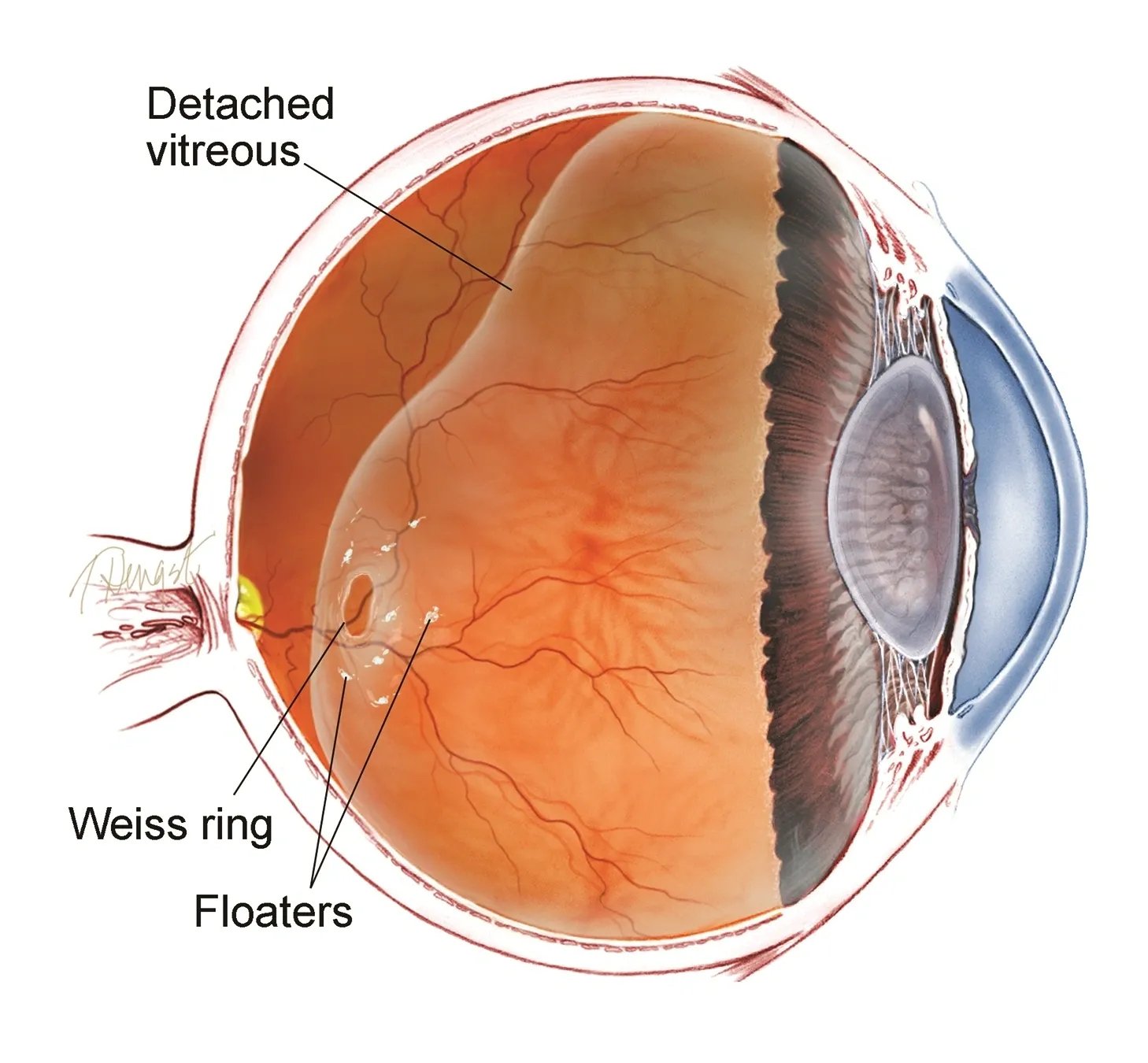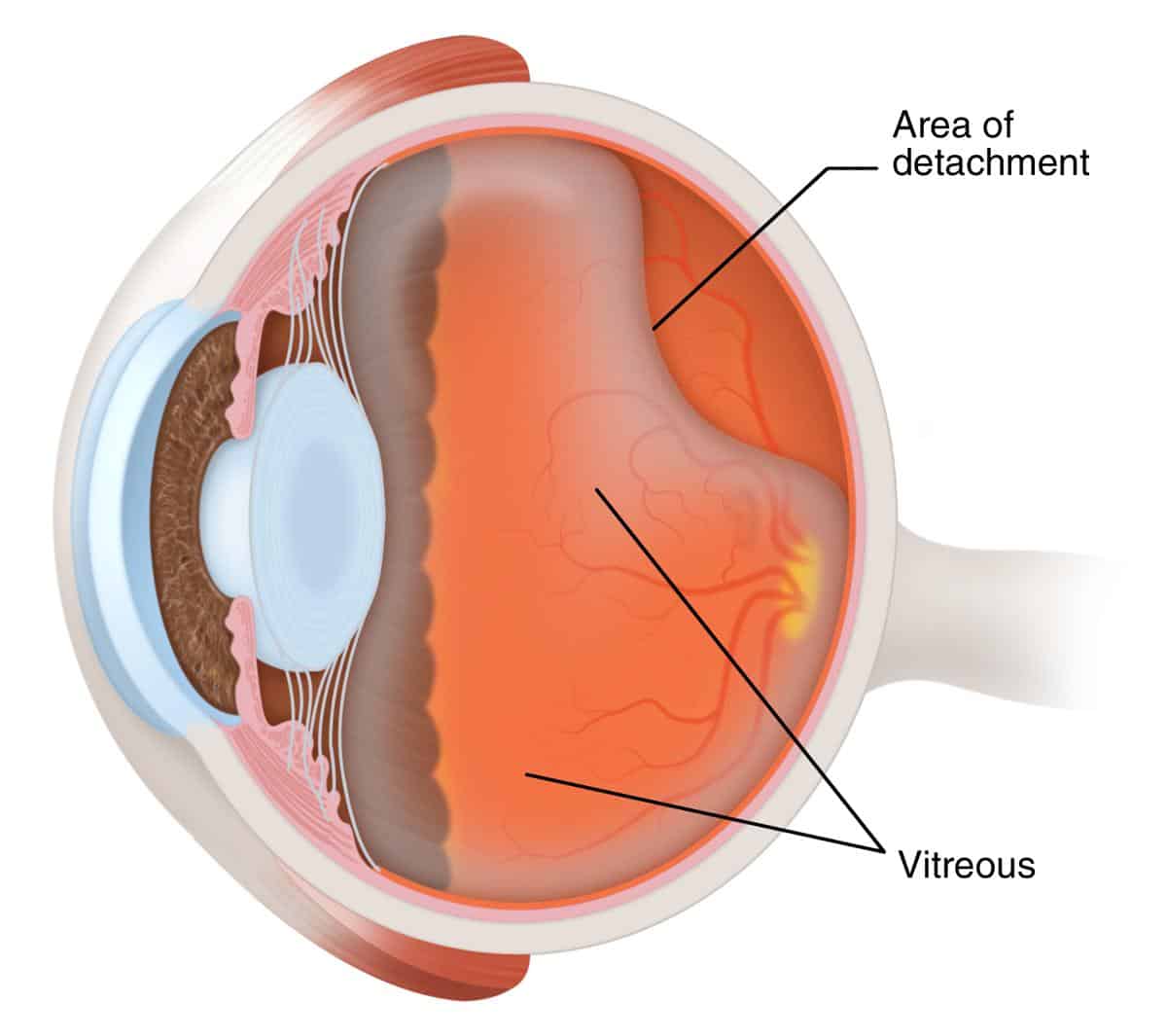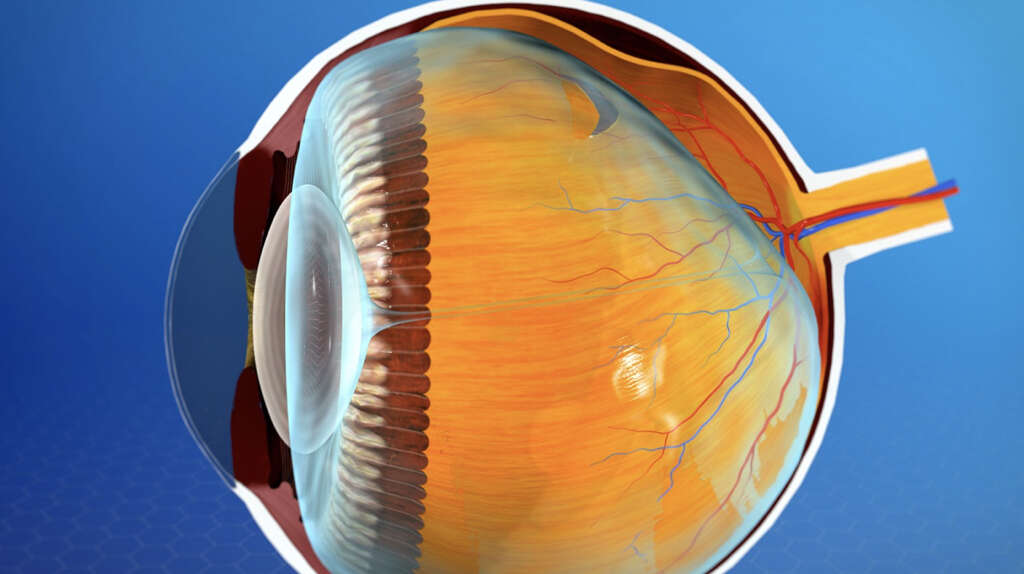Posterior Vitreous Detachment - In posterior vitreous detachment (pvd), the gel that fills your eyeball separates from your retina. It becomes less solid and more liquid. [1] it refers to the separation of the posterior hyaloid membrane. If you see dark specks or flashes of light, it's possible you could have posterior vitreous detachment (pvd), an eye problem many people have as they age. As we age, the vitreous changes. It’s a common condition with age. A posterior vitreous detachment (pvd) is when the vitreous pulls away from the retina. Pvd can cause floaters or flashes of light, which you. As you get older, a gel inside. A posterior vitreous detachment (pvd) is a condition of the eye in which the vitreous membrane separates from the retina.
It becomes less solid and more liquid. As you get older, a gel inside. A posterior vitreous detachment (pvd) is a condition of the eye in which the vitreous membrane separates from the retina. A posterior vitreous detachment (pvd) is when the vitreous pulls away from the retina. As we age, the vitreous changes. [1] it refers to the separation of the posterior hyaloid membrane. In posterior vitreous detachment (pvd), the gel that fills your eyeball separates from your retina. Pvd can cause floaters or flashes of light, which you. It’s a common condition with age. If you see dark specks or flashes of light, it's possible you could have posterior vitreous detachment (pvd), an eye problem many people have as they age.
It becomes less solid and more liquid. A posterior vitreous detachment (pvd) is a condition of the eye in which the vitreous membrane separates from the retina. Pvd can cause floaters or flashes of light, which you. In posterior vitreous detachment (pvd), the gel that fills your eyeball separates from your retina. If you see dark specks or flashes of light, it's possible you could have posterior vitreous detachment (pvd), an eye problem many people have as they age. As we age, the vitreous changes. A posterior vitreous detachment (pvd) is when the vitreous pulls away from the retina. As you get older, a gel inside. [1] it refers to the separation of the posterior hyaloid membrane. It’s a common condition with age.
Posterior Vitreous Detachment myeyespecialist
A posterior vitreous detachment (pvd) is when the vitreous pulls away from the retina. As you get older, a gel inside. It’s a common condition with age. In posterior vitreous detachment (pvd), the gel that fills your eyeball separates from your retina. Pvd can cause floaters or flashes of light, which you.
Posterior Vitreous Detachment Asia Retina Singapore
A posterior vitreous detachment (pvd) is a condition of the eye in which the vitreous membrane separates from the retina. If you see dark specks or flashes of light, it's possible you could have posterior vitreous detachment (pvd), an eye problem many people have as they age. Pvd can cause floaters or flashes of light, which you. [1] it refers.
Posterior Vitreous Detachment (PVD) Overview and More
Pvd can cause floaters or flashes of light, which you. [1] it refers to the separation of the posterior hyaloid membrane. As you get older, a gel inside. A posterior vitreous detachment (pvd) is a condition of the eye in which the vitreous membrane separates from the retina. A posterior vitreous detachment (pvd) is when the vitreous pulls away from.
Posterior Vitreous Detachment Discovery Eye Foundation
If you see dark specks or flashes of light, it's possible you could have posterior vitreous detachment (pvd), an eye problem many people have as they age. In posterior vitreous detachment (pvd), the gel that fills your eyeball separates from your retina. Pvd can cause floaters or flashes of light, which you. [1] it refers to the separation of the.
Posterior vitreous detachment American Academy of Ophthalmology
As you get older, a gel inside. If you see dark specks or flashes of light, it's possible you could have posterior vitreous detachment (pvd), an eye problem many people have as they age. As we age, the vitreous changes. Pvd can cause floaters or flashes of light, which you. A posterior vitreous detachment (pvd) is when the vitreous pulls.
Posterior vitreous detachment American Academy of Ophthalmology
If you see dark specks or flashes of light, it's possible you could have posterior vitreous detachment (pvd), an eye problem many people have as they age. As you get older, a gel inside. Pvd can cause floaters or flashes of light, which you. A posterior vitreous detachment (pvd) is when the vitreous pulls away from the retina. A posterior.
What is a PVD? Posterior Vitreous Detachment Treatment for Floaters
A posterior vitreous detachment (pvd) is when the vitreous pulls away from the retina. If you see dark specks or flashes of light, it's possible you could have posterior vitreous detachment (pvd), an eye problem many people have as they age. As you get older, a gel inside. It becomes less solid and more liquid. As we age, the vitreous.
Posterior vitreous detachment American Academy of Ophthalmology
As you get older, a gel inside. Pvd can cause floaters or flashes of light, which you. A posterior vitreous detachment (pvd) is when the vitreous pulls away from the retina. It becomes less solid and more liquid. [1] it refers to the separation of the posterior hyaloid membrane.
Posterior Vitreous Detachment Griffin Takle Eye Group
It becomes less solid and more liquid. It’s a common condition with age. As we age, the vitreous changes. [1] it refers to the separation of the posterior hyaloid membrane. As you get older, a gel inside.
Posterior Vitreous Detachment What Is a Posterior Vitreous Detachment?
It becomes less solid and more liquid. As we age, the vitreous changes. Pvd can cause floaters or flashes of light, which you. A posterior vitreous detachment (pvd) is when the vitreous pulls away from the retina. [1] it refers to the separation of the posterior hyaloid membrane.
As You Get Older, A Gel Inside.
A posterior vitreous detachment (pvd) is a condition of the eye in which the vitreous membrane separates from the retina. If you see dark specks or flashes of light, it's possible you could have posterior vitreous detachment (pvd), an eye problem many people have as they age. As we age, the vitreous changes. It’s a common condition with age.
[1] It Refers To The Separation Of The Posterior Hyaloid Membrane.
It becomes less solid and more liquid. Pvd can cause floaters or flashes of light, which you. A posterior vitreous detachment (pvd) is when the vitreous pulls away from the retina. In posterior vitreous detachment (pvd), the gel that fills your eyeball separates from your retina.


:max_bytes(150000):strip_icc()/posterior-vitreous-detachment-5094206-v1-8a7f907c332e424fbcfe2af02ea0c335.jpg)



